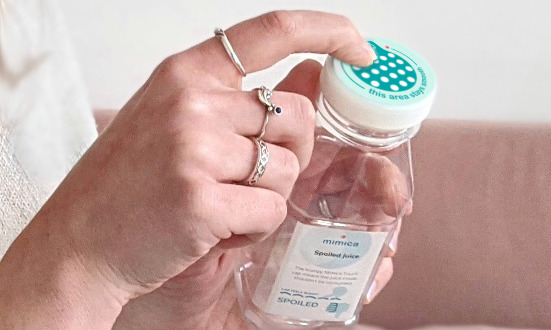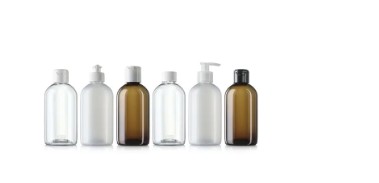United Caps has worked with start-up Mimica to produce a unique closure displaying freshness indicators for food.
Mimica was able to calibrate a gel that never comes into contact with the product yet enables a specialised label to change from smooth to bumpy based on storage conditions and food profile.
The United Caps and Mimica teams were able to develop a fully recyclable cap that does not affect bottle recyclability yet offers a fast, easy way for a consumer to ensure food quality is still good.
The closure consists of a base cap and over cap, a bumps tray and the top foil label that becomes bumpy as food deteriorates.
The Mimica cap arrives at the filling line in two parts: The base cap, which has been tested by key filling line manufacturers and requires only minimal changes to the filling line; and the over cap which is applied after the filling process with a dedicated machine integrated into the production flow like other modules such as labelling or film wrapping. The top cap, where the bumps will appear is dormant until it is activated by the consumer which happens automatically when the cap is twisted open for the first time.
The cap is currently undergoing a pilot project in the UK with an orange juice brand.
United Caps claims in the UK alone thee is up to 121 million kilograms of total annual waste of juice, and the new Mimica Touchcap has a waste reduction potential of 44%, equating to 53 million kilograms annually of juice.
Benoit Henckes, chief executive of United Caps, said: “We look at solutions like this in a holistic fashion,” Henckes added. “Is it innovative? Is it sustainable? What is the ROI for a brand who adopts it? Are there changes that need to be made on filling lines? What happens to the cap at end of life? The Mimica TOUCHCAP ticked all those boxes. If just two days of shelf life could be added to food products, retail waste could be cut by 50%, and home waste of perishable products could be cut by 63%. Brands who adopt this technology could increase sales by at least 10%, including the willingness of consumers to purchase larger containers of products, such as orange juice, without worrying as much about spoilage prior to full consumption.”
Source:







